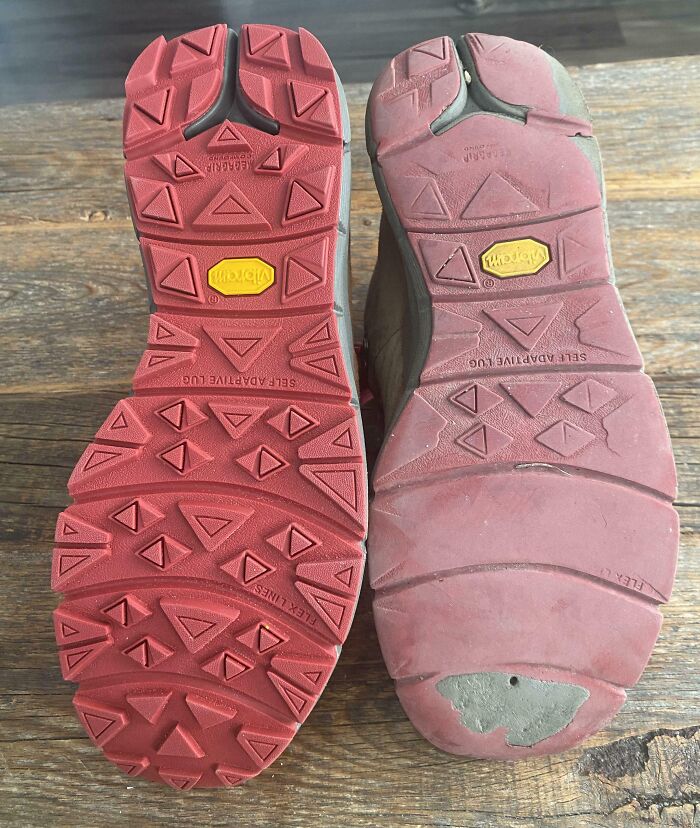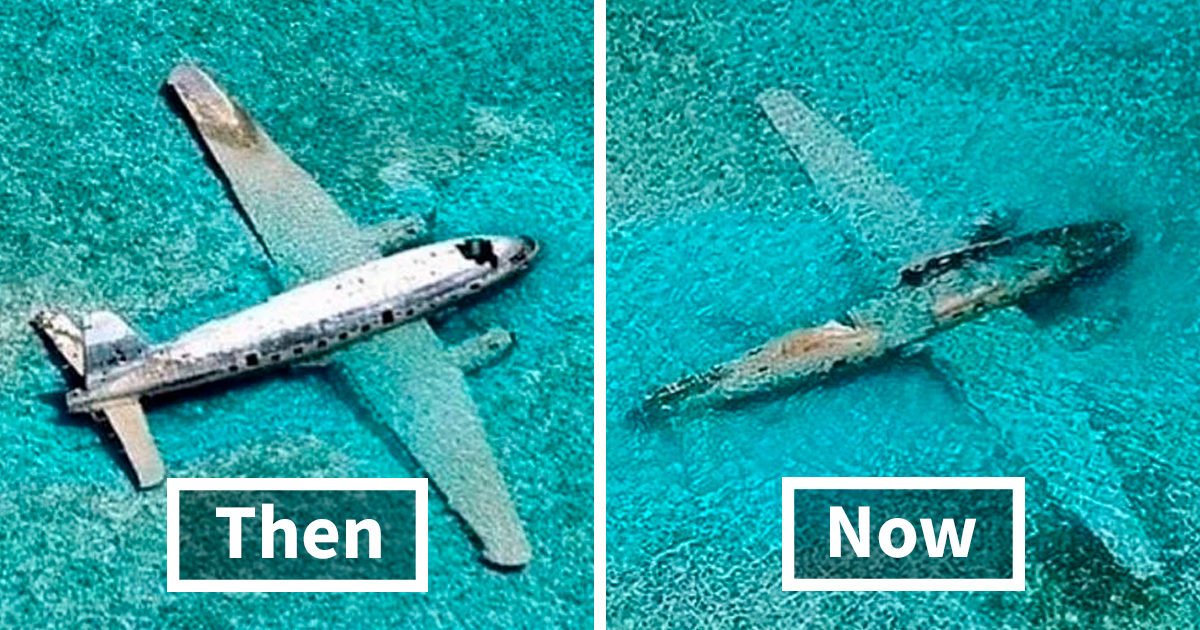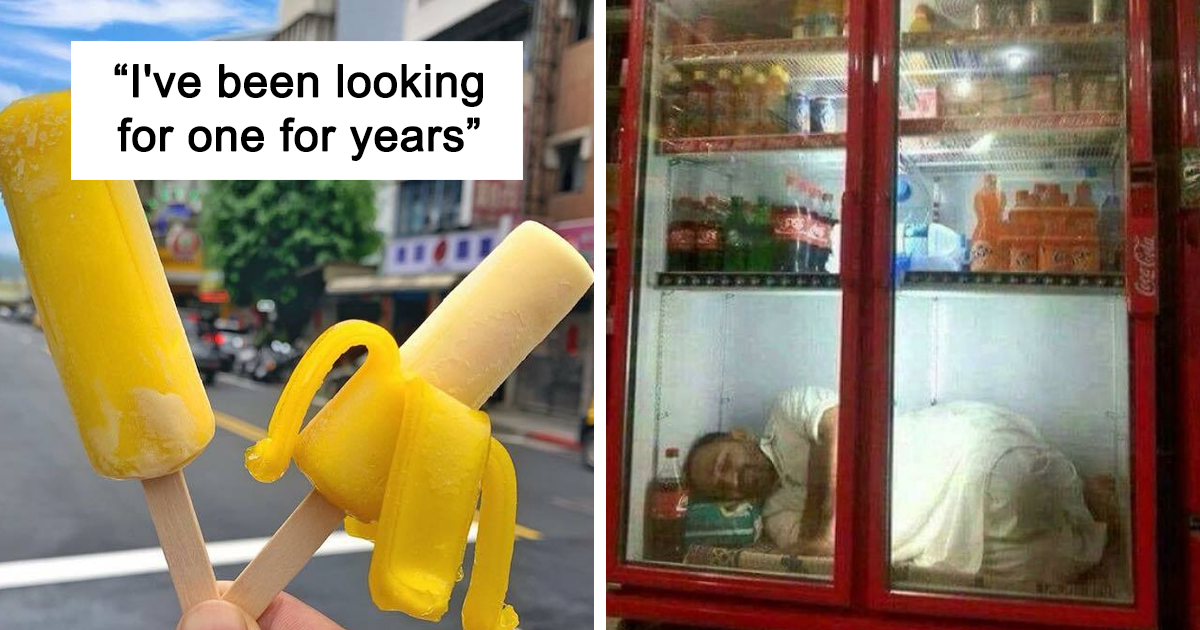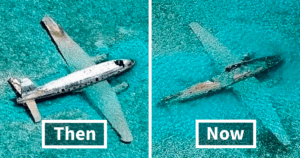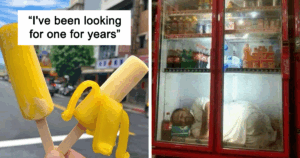“Discover the Hidden Stories: 50 Stunning Images That Reveal the Impact of Time on Everyday Objects!”
#14 The Counter Of Chetâs Diner In My Hometown In USA
 Image credits: KGBspy
Image credits: KGBspy
#15 A New Trail Marker vs. One Thatâs More Than 20 Years Old
 Image credits: Supmah2007
Image credits: Supmah2007
Just because an item is old and worn down doesn’t mean we can no longer use it. Clothes, for example, nowadays are made from cheap materials and don’t really last that long. Experts say that it’s because of consumerism. The pressure to supply more stuff results in lower-quality garments, and we all want more clothes for cheaper, right?
#16 My Boss’s Laptop’s Trackpad Is Worn Down To The Circuit Board
 Image credits: Steven_Ray20
Image credits: Steven_Ray20
#17 The Difference In My Work Gloves After Using Them For 2 Weeks, One Week And New
 Image credits: 8hu5rust
Image credits: 8hu5rust
#18 My Mum Replaced A Wooden Spoon After 53 Years Of Use
 Image credits: dr_lm
Image credits: dr_lm
Well, not necessarily. Lately, the concept of visible mending has been trending. Apparently, extending a garment’s life just by nine months can reduce its environmental impact by 20-30%. UK-based department store chain John Lewis also reported a sold-out situation of darning needles in 2022. Sales of products like patches and repair tape also more than doubled, as they went up 61%.
#19 How This Wall Has Eroded Over Time
 Image credits: IntrepidStatus
Image credits: IntrepidStatus
#20 A Pitcher After One Day Of Use (In A Bakery) vs. Used For More Than A Year
 Image credits: CeriseFern
Image credits: CeriseFern
#21 You Guys Have Any Idea What The Code Could Be?
 Image credits: Lee_does_stuff
Image credits: Lee_does_stuff
The Japanese art of visible mending ‘sashiko’ is similar in its philosophy and execution to ‘kintsugi.’ Both are about embracing the transcience and imperfection of things with the passage of time. But where kintsugi is about repairing broken pottery with gold, sashiko is about mending fabric with geometrical patterns.
